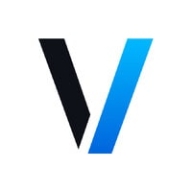

Veracode and Kiuwan Insights compete in application security testing. Kiuwan Insights appears to have the upper hand due to its comprehensive feature set offering significant value for the price, indicating higher user satisfaction despite higher setup costs.
Features: Veracode provides software composition analysis, vulnerability tracking, and supports secure coding practices. Kiuwan Insights delivers comprehensive code quality analysis, efficient risk assessment capabilities, and a broad approach to software security, with a noticeable focus on being feature-rich though having a steeper learning curve.
Ease of Deployment and Customer Service: Veracode offers a straightforward deployment process and efficient customer support, catering to teams seeking quick integration. Kiuwan Insights might involve a more complex setup but is complemented by responsive and comprehensive customer service, favoring those who require flexible support.
Pricing and ROI: Veracode generally maintains a manageable setup cost, ideal for smaller budgets, while offering a scalable ROI. Kiuwan Insights, although more expensive upfront, promises substantial ROI through extensive analytical features, attracting businesses interested in prioritizing long-term benefits over initial cost savings.
| Product | Market Share (%) |
|---|---|
| Veracode | 21.2% |
| Kiuwan Insights | 0.6% |
| Other | 78.2% |

| Company Size | Count |
|---|---|
| Small Business | 69 |
| Midsize Enterprise | 43 |
| Large Enterprise | 112 |
Kiuwan Insights supports the continuity and integrity of open source management with a complete multi-technology solution that seamlessly integrates with key SDLC tools.
With Kiuwan Insights, you can identify and manage:
vulnerabilities,
compliance, and
operational risk
that may arise from using open source components.
Open source components are a significant and important part of commercial software today. Yet the use of these components introduces the risk of security vulnerabilities, as well as a need to ensure proper licensing and adherence to policies.
Automation is an essential strategy for detection of open source components and security vulnerabilities, compliance analysis, and policy enforcement.
Veracode is a leading provider of application security solutions, offering tools to identify, mitigate, and prevent vulnerabilities across the software development lifecycle. Its cloud-based platform integrates security into DevOps workflows, helping organizations ensure that their code remains secure and compliant with industry standards.
Veracode supports multiple application security testing types, including static analysis (SAST), dynamic analysis (DAST), software composition analysis (SCA), and manual penetration testing. These tools are designed to help developers detect vulnerabilities early in development while maintaining speed in deployment. Veracode also emphasizes scalability, offering features for enterprises that manage a large number of applications across different teams. Its robust reporting and analytics capabilities allow organizations to continuously monitor their security posture and track progress toward remediation.
What are the key features of Veracode?
What benefits should users consider in Veracode reviews?
Veracode is widely adopted in industries like finance, healthcare, and government, where compliance and security are critical. It helps these organizations maintain strict security standards while enabling rapid development through its integration with Agile and DevOps methodologies.
Veracode helps businesses secure their applications efficiently, ensuring they can deliver safe and compliant software at scale.
We monitor all Static Code Analysis reviews to prevent fraudulent reviews and keep review quality high. We do not post reviews by company employees or direct competitors. We validate each review for authenticity via cross-reference with LinkedIn, and personal follow-up with the reviewer when necessary.